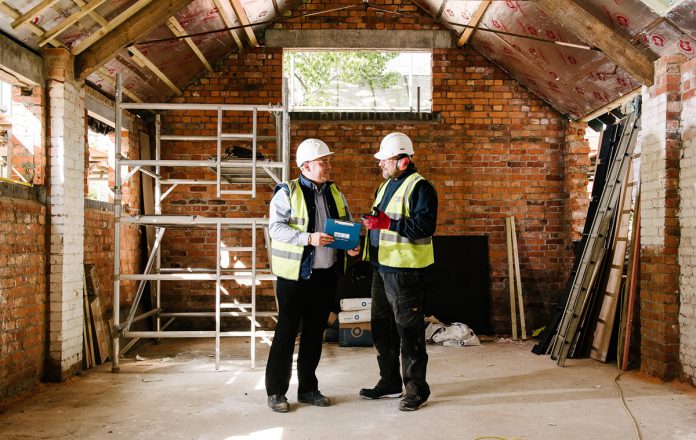Resin repairs offer a practical, quick and cost-effective option for the repair of decayed large sectioned timbers
Previously, repairs to large sectioned timbers would have been carried out with the addition of steel plates either side of the timber and a new section of treated timber inserted to replace the lost section.
Modern methods have evolved, firstly by creating a ‘shutter box’ around the section to be recreated and then introducing designed steel or glass fibre rods (shear connectors), to provide some stiffness and strength to the repair.
Two-part epoxy resin mixed with silica sand – to ‘bulk out’ the resin volume – would then be poured into the shutter box and, once cured, the shuttering struck to reveal a new cast replacement beam end.
Typical uses for this method would be for large section (300 x 300mm) tie beams, principal rafters, hip rafters and in fact, any timber where it could be proven the replacement cost would be greater than the in-situ resin repair cost.
In most cases, the replacement like-for-like with, say, an eight-metre long tie beam would be so difficult to undertake in terms of managing this size of timber onsite and reconnecting all abutting timbers, such as cross joists and principal rafters, that resin would not only be the most cost-effective choice but also the most practical.
Evolution not revolution
While cast resin can be sanded, shaped and painted to try recreate the original timber it replaced, specialist suppliers have begun to offer purpose-made splice repair kits, with a new beam end created in timber and the connection to the host section made with shear connectors protruding out of the new piece.
These new splice kits can be connected by housing the shear connectors in slots cut into the host section and then filling the remaining void space around the connectors with epoxy resin.
This new technique has led to much quicker repair times and also less volume of resin being required to create the repair, and consequently better value quotations from specialist remedial contractors like Peter Cox.
Latest developments
Due to the high demand for speedy delivery to site of new splice kits, once a decayed beam was discovered and the delays on site that normally occurred as a result, the highly skilled technicians would, subject to verification from a structural engineer, fabricate new slotted splice repair beam ends on site and insert the shear connectors into the ends of the host materials. This meant there would be no delays on site waiting for deliveries and the job could progress swiftly.
Peter Cox Ltd
Tel: 0808 1208737
Please note: this is a commercial profile





![[Video] Fireco: 80 new fire doors required for residential flats in London](https://www.pbctoday.co.uk/news/wp-content/uploads/2025/04/2024-06-01-Lords-view-one_1200x750_004-218x150.webp)








